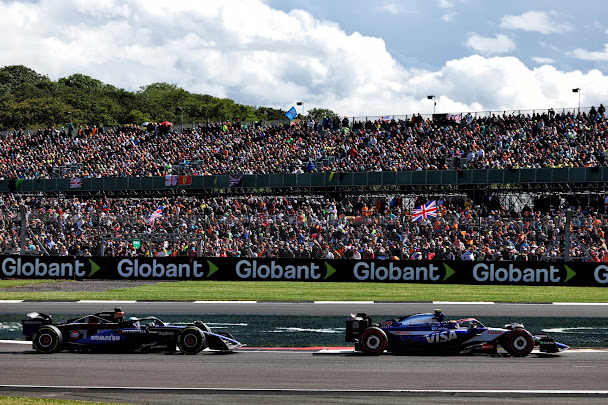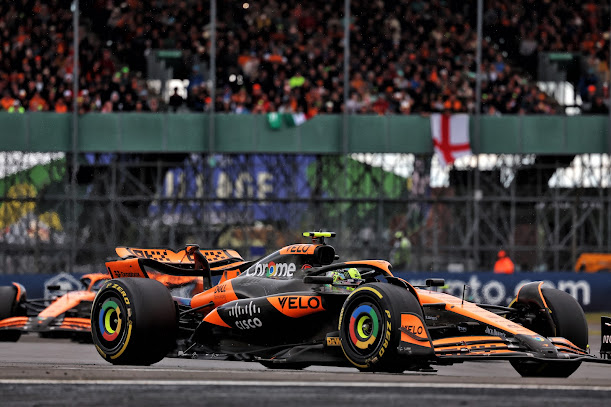A Corner-by-Corner Guide to the British Grand Prix
Senate Grand Prix has been operating at this racetrack for approximately thirty years.
As Formula 1® rolls into the heart of the British countryside this weekend, we find ourselves at the legendary British Grand Prix at the Silverstone Circuit.
This world-famous race track is the mecca of racing and is steeped in history, beloved by drivers and fans alike. It is renowned for its thrilling high-speed sections and demanding technical challenges.
At 5.891 km (3.66 miles) with 18 corners, it's an actual test of a car's aerodynamic prowess and a driver's courage. In 2024, it was voted by fans as the best race of the year for overtakes, unpredictability, and out-and-out racing.
First used in 1947 for racing and hosting the inaugural Formula 1® World Championship round on May 13, 1950, Silverstone has undergone significant evolution from its origins as a World War II RAF bomber station. Yet, it has always retained its essential character: blistering speed combined with a relentless flow.
Let's take a virtual lap, dissecting each of its famous corners, to understand the magic that makes Silverstone so special.
- Turn 1 (Abbey): The lap begins with a flat-out blast down the Hamilton Straight, leading into this lightning-fast right-hander. It's named after the nearby Luffield Abbey.
- Turn 2 (Farm Curve): A flat-out left kink that follows Abbey, crucial for setting up the car for the Village Corner.
- Turn 3 (Village): This is the circuit's first significant braking zone. It's a tighter right-hander, demanding precision before immediately flowing into The Loop.
- Turn 4 (The Loop): The slowest corner on the circuit, this tight left-hand hairpin is pivotal for a firm exit onto the Wellington Straight.
- Turn 5 (Aintree): A fast, flat-out left-hand curve that requires smooth steering inputs. It's all about carrying maximum speed.
- Wellington Straight: This long straight (part of the circuit's original RAF runway) provides a prime DRS zone and allows cars to hit blistering speeds.
- Turn 6 (Brooklands): A long left-hander at the end of the Wellington Straight. It's a heavy braking zone that tightens on exit, requiring good trail braking and precision to set up for Luffield.
- Turn 7 (Luffield): A long, sweeping right-hander that demands a late apex to maximise exit speed and traction onto Woodcote.
- Turn 8 (Woodcote): Once a terrifyingly fast corner, Woodcote is now a relatively simple flat-out right-hander, leading onto a short straight before the circuit's most famous complex.
- Turn 9 (Copse): One of the fastest corners in Formula 1®! Copse is a searingly fast, flat-out notorious site of the 2021 Hamilton-Verstappen clash; it's where the brave separate themselves.
- Turns 10 & 11 (Maggotts & Becketts): The most iconic, high-speed corner sequence in all of motorsport. It's a rapid left-right flick (Maggotts) that leads immediately into a downhill right (Becketts), followed by another left into (Chapel).
- Hangar Straight: Another long, high-speed straight that acts as the second DRS zone. Cars hit their top speeds here of 225 MPH before the next major braking event.
- Turn 15 (Stowe): A fast, challenging right-hander at the end of the Hangar Straight, featuring a significant braking zone that leads downhill.
- Turn 16 (Vale): A left-hand kink that immediately follows Stowe, leading into the final complex.
- Turns 17 & 18 (Club): The final two corners, a quick left-right chicane that propels cars back onto the Hamilton Straight. A firm exit here is vital for a good lap time.
Silverstone is a test with its high-speed nature, meaning the tyres and engines are pushed to their limits.
This unique combination of raw speed, technical precision, and historical significance makes the British Grand Prix at Silverstone an unmissable event on the Formula 1® calendar.

.jpg)



.jpg)

.jpg)





Comments
Post a Comment